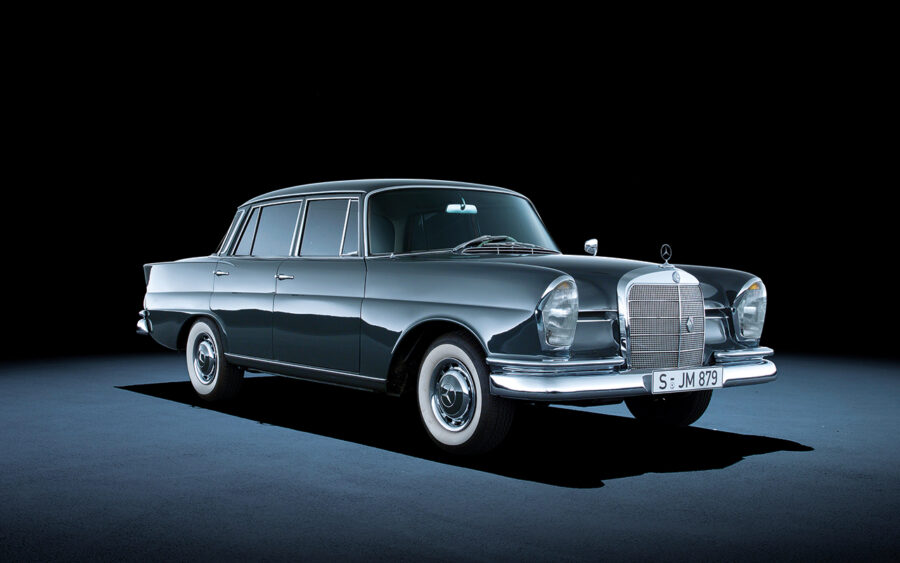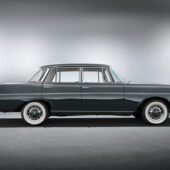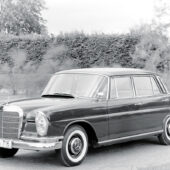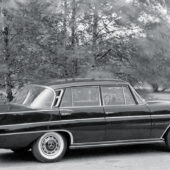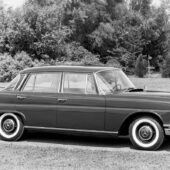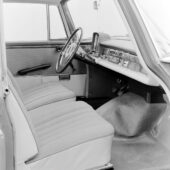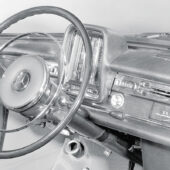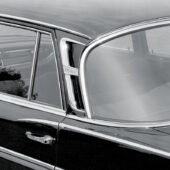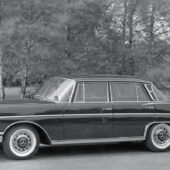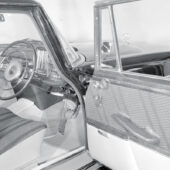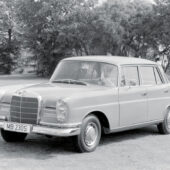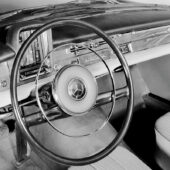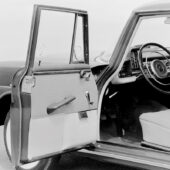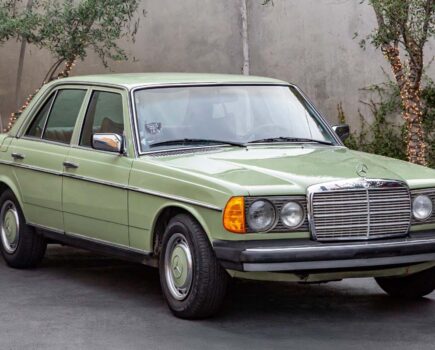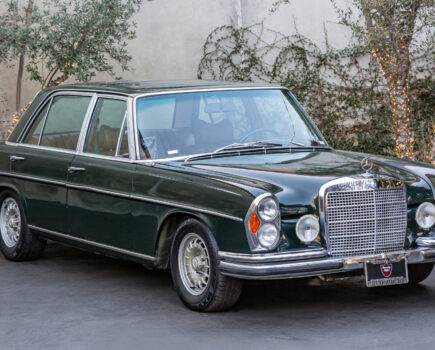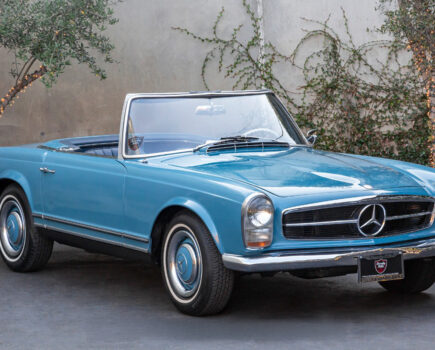Here’s what to look for when buying the six-cylinder version of Mercedes’ 1960s saloon – the W111 ‘Fintail’
Words: Jack Grover Images: Mercedes-Benz
The W111 ‘Heckflosse’ or ‘Fintail’ was launched in 1959 as the first stage in the replacement of the popular ‘Ponton’ range. The new model was very much a thorough update of the existing platform but chief engineer Fritz Nallinger was instructed to give the car fashionable styling which echoed trends coming out of the Italian styling studios. In typical Mercedes form the finswhich gave the car its nickname were subtle and also had a safety aspect, in that they allowed the driver to see the rear corner of the car in either the wing mirror or out the rear window. The W111 still had the traditional big Mercedes grille with the three pointed star on top, but the front end also boasted distinctive light units. First seen on the 1957 facelift of the 300SL, these ‘Lichteinheiten’ integrated head, side and indicator lamps behind a single lens. There was also a brand new cabin facia with a safety-padded dashboard and a controversial ‘all in one’ gauge cluster featuring a vertical strip speedometer.
Three models were offered, each with the 2.2-litre straight six engine in a higher state of tune – 220,220S and 220SE. Although they were extremely expensive (the 220SE cost 20 per cent more than a Jaguar MkX), the Fintails were distinguished by their spacious cabins, excellent refinement and very high standard of engineering. Mercedes sold around 26,000 examples of the 220S each year, with the 220 and the 220SE selling around 10,000 each. The addition of the basic four-cylinder W110 and luxurious W112 versions gave Mercedes significant economies of scale by reusing the same basic platform and running gear.
By 1965 the styling was already becoming dated and the current range was felt to be in need to a major update to remain competitive. The 220SE and W112 were replaced by the new upmarket W108 range. An enlarged engine created a revised mid-range model, the 230S. There was also a basic 230 model but on the shorter-wheelbase W110 platform, leaving the 230S as the sole W111 saloon. This served as a stopgap until a new medium Mercedes model, the W114 ‘Stroke Eight’, arrived in 1968. A total of 337,803 W111s had been built.

Bodywork
While the supply of mechanical parts for the W111 is excellent, the same does not apply to body panels and structural sections. The structure is also quite complicated so repairs can be extremely expensive, making the structural condition by far the most important thing to check. Despite their excellent material and build quality, even the youngest Fintail is now 50 years old and can be harbouring major corrosion.
It is the lower sections that tend to rot, due to water collecting behind blocked body drains and dirt lingering in various nooks and crannies. The sills should be checked along their entire length, but especially around the jacking points at each end. The door bottoms are also susceptible and new door skins are rare and expensive (£300 and over!). Fortunately the doors on all W110/111/112 models are interchangeable but acquiring a good door and spraying to the correct colour is still an expensive business. The same goes for front and rear wings – the fronts tend to go up inside where they join the bulkhead, while the rears rot from the wheelarch area and behind the rear lamps. Check the area under the rear seat, the spare wheel well in the boot and the condition of the ‘chassis’ rails welded under the floorpan as these can be prohibitively expensive to fix. Leaky door seals will cause the front footwells to rust out as the carpets trap moisture.
While most larger trim parts such as bumpers can be re-chromed at a price, smaller items such as badges, lamp trims and trim strips are extremely difficult to source.

Engine and transmission
The original W111 range used the same 2195cc six-cylinder overhead cam M180 engine that had been used in the Ponton, although in the Fintail it had new carburettors and a tweaked camshaft to provide a little more power and a broader spread of torque. The 220 and 220S had twin Solex carburettors while the 220SE had Bosch mechanical fuel injection to produce 120 horsepower. In the 230S the engine (already nicely over-square, which was one reason for the unit’s smoothness and reliability at high cruising speeds) was bored out to 2306cc and has twin Zenith carbs.
All engines are long-lived and free from any inherent weaknesses. Parts availability is excellent. Given the age and mileage of most surviving W111s the timing chains should be checked for excessive noise. Oil pressure should be between 30 and 40 psi at cruising speeds. The engines do require regular coolant changes due to the aluminium alloy head, so watch for hot running caused by blocked coolant passages. Given that it is also worth checking for signs of head gasket failure. Engine mountings are another perishable item on cars this age. Both carburettor and fuel-injected cars can suffer running problems caused by leaky seals and shafts, and leaks on the vacuum side can also upset the operation of the automatic transmission.
Providing it has had a modicum of attention with fresh oil, the manual transmission fitted to most W111s is virtually indestructible. There is synchromesh on all four gears but even when new it appreciated a slow and deliberate hand on the column-mounted lever. All gear changes should be clean and free of nasty clunking or grinding noises. Wear in the bushes in the gearchange linkage is the source of most problems. You might find a W111 with the optional floor-mounted lever, attached to the same transmission.
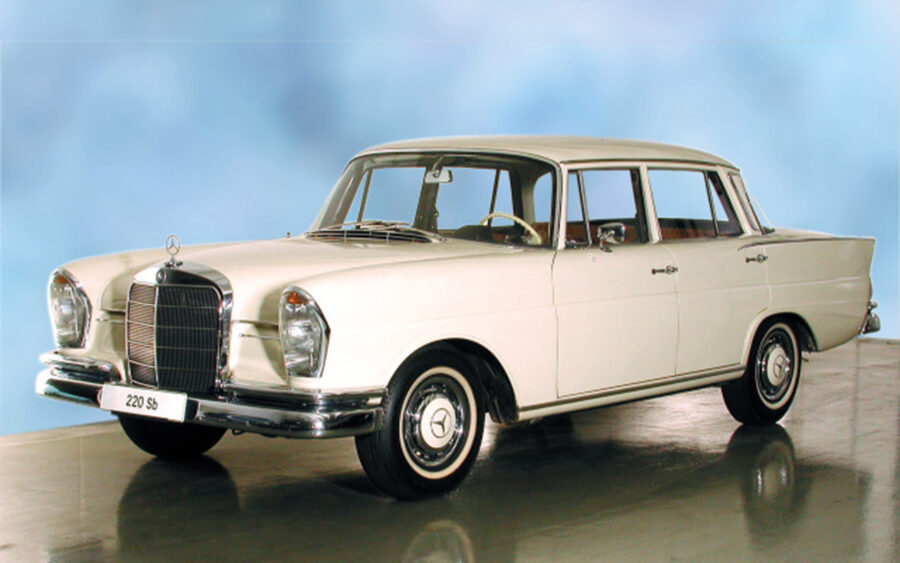
Suspension, steering and brakes
The original Hydrak semi-automatic fitted before 1962 is extremely rare to find now. It was replaced by Mercedes’ own design of four-speed automatic, which is excellent. Check the level and condition of the fluid and that gear changes are made without slurring or snatching. The transmission pulls away in second gear unless the lock-out is engaged.
The W111 inherited the Ponton’s clever single-point swing axle independent rear suspension, with the added refinement of a third spring sat horizontally between the arms. The rear suspension is seated on flexible rubber mounting bushes which must be carefully inspected for condition as these can not only ruin the ride but cause dangerous handling when they get soggy. If the rear wheels show negative camber the springs need renewing. The front sits on more conventional coil-sprung wishbones. The kingpins must be greased every 3000 miles or so and even then they are treated as service items. Get the front end off the ground and check for excessive wear by rocking the wheels in and out. Stiff steering can also indicate partially-seized kingpins.
Interior, trim and electrics
With relatively little in the way of soft furnishings the inside of a W111 holds up well. The standard cloth trim will often be worn out and fraying after all these years, but most cars sold had the optional MB-Tex vinyl trim which is much harder-wearing, while the more expensive leather is rare to find on an original car. All the materials needed to refresh sagging or ripped seats are available but the skills to reupholster seats don’t come cheap.
A common problem on old Fintails is the material of the steering wheel (black as standard, ivory as an option) becoming discoloured and then cracking up. This can be restored by a specialist or be done at home with enough sandpaper, epoxy, paint and patience. The cabin headlining generally survives well but if it has been damaged by rips or water ingress it can be very expensive to replace.
For all its unusual looks the gauge cluster is just a collection of conventional instruments so any problematic dials can be repaired or rebuilt by a suitable specialist at normal cost.
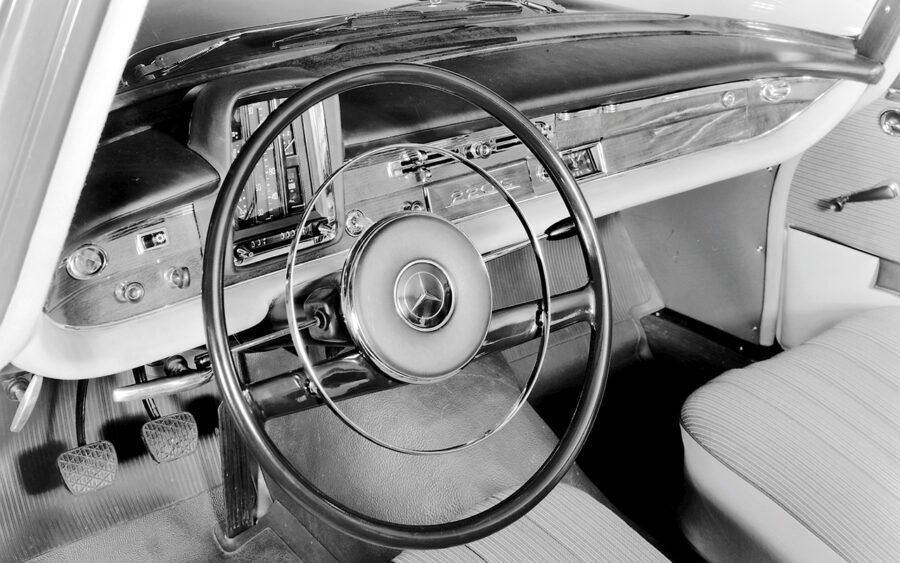
Mercedes W111 ‘Fintail’: our verdict
The W111 is now entering collector’s territory and prices are only going to go one way. Which is a shame because these superbly-engineered cars make excellent classics for regular (or even daily) use while brimming with all the solidity and attention to detail that goes with their badge. The 220S and SE will remain the most desirable and probably give the best monetary return over the years, but the 230S is both better to drive and less attractive to collectors due to its slightly lower-rent specification. That is the one to buy for the enthusiast rather than the investor.
Widely available in Europe and North America, the W111 has always been an enthusiat’s favourite but has come to wider attention in recent years, with values rising accordingly. Five figures is generally the minimum amount needed to secure a decent and well-looked after 220S or 230S, with examples of the rarer 220 and 220SE versions in the same condition sitting at around £15,000.
Original cars, often imported from dry climates in America, the Middle East or South Africa, can fetch around £15,000 for an ‘S’ model and £20,000 or more for a rarer example. Restored cars with a good history can command £25,000 and over. By contrast left-hand drive cars are worth slightly less here in the UK, so a not-quite-perfect but solid and useable 230S from the continent might just squeak in under the £10,000 mark.

